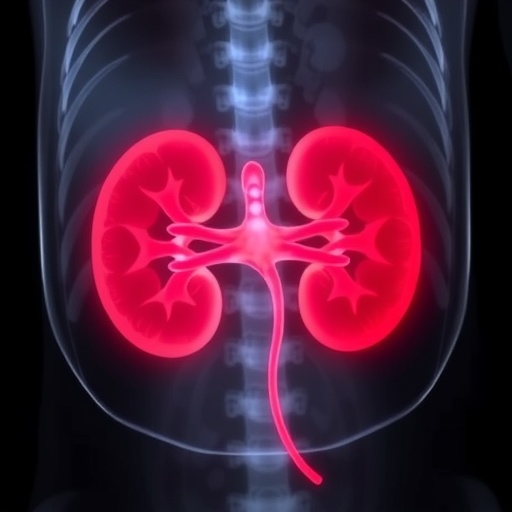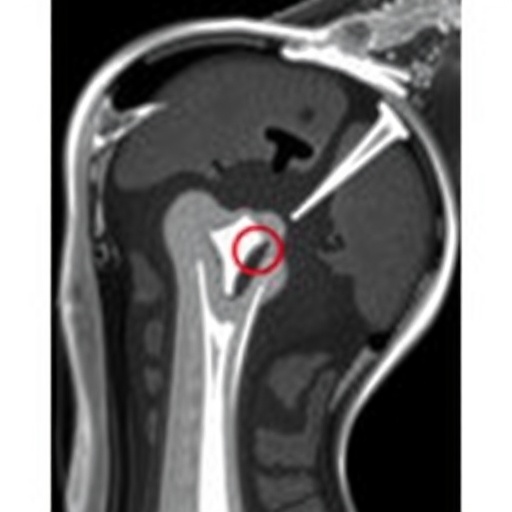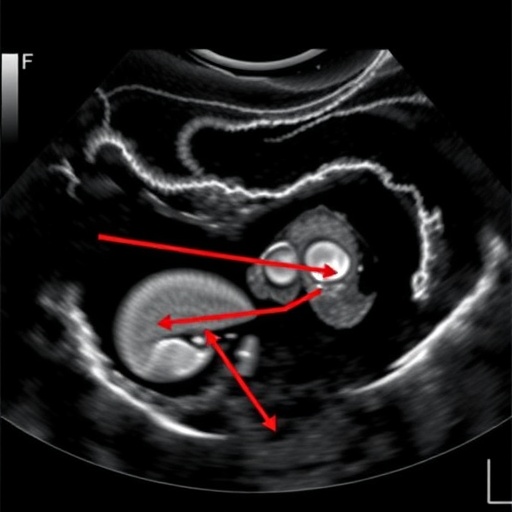
In the realm of pediatric medicine, the use of contrast agents during imaging procedures has long been a standard practice. Among these, iodinated contrast materials are frequently employed for computed tomography (CT) scans, offering visually rich images that aid in accurate diagnoses. However, this modern convenience is not without risk, particularly concerning kidney health in children. A recent narrative review sheds light on the significant association between the use of intravenous iodinated contrast and the occurrence of acute kidney injury (AKI) in the pediatric population, prompting healthcare professionals to reassess the safety protocols surrounding these essential imaging techniques.
The article, authored by Salah Ayad Mohamed and colleagues, delves into vital epidemiological data that underscores the vulnerability of children to nephrotoxic effects stemming from contrast exposure. Though adult populations have long been studied for AKI risks related to contrast agents, children’s unique physiological responses demand a specific focus. The review meticulously collates findings from various studies to provide a comprehensive overview of the incidence and impact of AKI in young patients following contrast administration.
What makes this narrative review particularly noteworthy is its exploration of environmental factors that enhance the risk of AKI in children, highlighting that younger patients, especially those with pre-existing conditions such as dehydration, congenital anomalies, or prior kidney issues, face a considerably elevated risk. As healthcare providers increasingly rely on imaging techniques for diagnostics, understanding these risk factors becomes pivotal in protecting the pediatric population from unintended harm.
The physiological differences between children and adults extend beyond sheer size; they significantly affect organ function and fluid balance. For instance, the immature renal function in infants and young children may predispose them to nephrotoxicity from iodinated contrast media. Research has indicated that the glomerular filtration rate (GFR) does not reach adult levels until around the age of two, meaning kidneys in younger populations may process such agents less effectively. This physiological limitation necessitates a cautious approach towards the administration of iodinated contrast, reinforcing calls for tailored protocols specific to pediatric care.
Moreover, the review emphasizes the importance of hydration and pre-procedural assessment in mitigating the risks of AKI post-contrast exposure. Adequate hydration is critical for promoting renal perfusion and facilitating the effective excretion of iodinated agents. The authors advocate for specific hydration protocols and consideration of diuretics in higher-risk pediatric patients to further safeguard renal integrity during and after imaging procedures.
Another pivotal aspect discussed is the aforementioned variability in susceptibility. Not all pediatric patients respond uniformly to iodinated contrast agents; thus, stratifying risks based on individual health profiles becomes crucial. The narrative review highlights a pressing need for individualized assessment rather than a blanket application of protocols. By acknowledging specific risk profiles—including age, baseline kidney function, and concurrent medications—healthcare providers aim to enhance patient safety effectively.
The implications of this review extend beyond clinical practice—they suggest a paradigm shift in the assessment of risk versus benefit with contrast use in pediatric imaging. Clinicians must become advocates of mindful imaging practices that not only prioritize diagnostic accuracy but also safeguard the multifaceted health of their young patients. Engaging in shared decision-making with families regarding the use of iodinated contrast also forms an essential part of contemporary pediatric care, ensuring parents are well informed about the potential risks associated with the procedures.
In conclusion, the narrative review highlights a significant and timely issue in pediatric medicine. The association between intravenous iodinated contrast exposure and acute kidney injury is not merely a statistic; it is a call to action for healthcare professionals. By promoting rigorous risk assessments, individualized protocols, and proper hydration measures, the medical community can foster a culture of safety that prioritizes the well-being of pediatric patients. As research continues to illuminate the intricacies of contrast-related nephrotoxicity, vigilance and proactive engagement become paramount in advancing the standards of pediatric care.
The findings presented in the narrative review serve as a crucial reminder that while diagnostic imaging is an invaluable tool in modern medicine, a nuanced understanding of its impacts—particularly in fragile populations—will only enhance the quality of care provided to our youngest patients. This exploration into the risks linked to iodinated contrast agents affirms the need for ongoing education and adaptation of practices that reflect the evolving landscape of pediatric healthcare.
Subject of Research: Risk of acute kidney injury following intravenous iodinated contrast exposure among the pediatric population.
Article Title: Risk of acute kidney injury following intravenous iodinated contrast exposure among pediatric population: a narrative review.
Article References: Salah Ayad Mohamed, N., Waleed Abdullah Alkharji, F., Fuad Ghareeb, M. et al. Risk of acute kidney injury following intravenous iodinated contrast exposure among pediatric population: a narrative review. Pediatr Radiol (2025). https://doi.org/10.1007/s00247-025-06380-6
Image Credits: AI Generated
DOI: https://doi.org/10.1007/s00247-025-06380-6
Keywords: Pediatric nephrotoxicity, iodinated contrast, acute kidney injury, imaging safety, hydration protocols, individualized care.
Tags: acute kidney injury epidemiologychildren’s kidney healthcomputed tomography in pediatricscontrast-induced nephropathyenvironmental risk factors for AKIiodinated contrast agentsnephrotoxic effects in childrenpediatric acute kidney injurypediatric imaging safetypediatric medicine advancementssafety protocols for imagingvulnerability of pediatric patients





